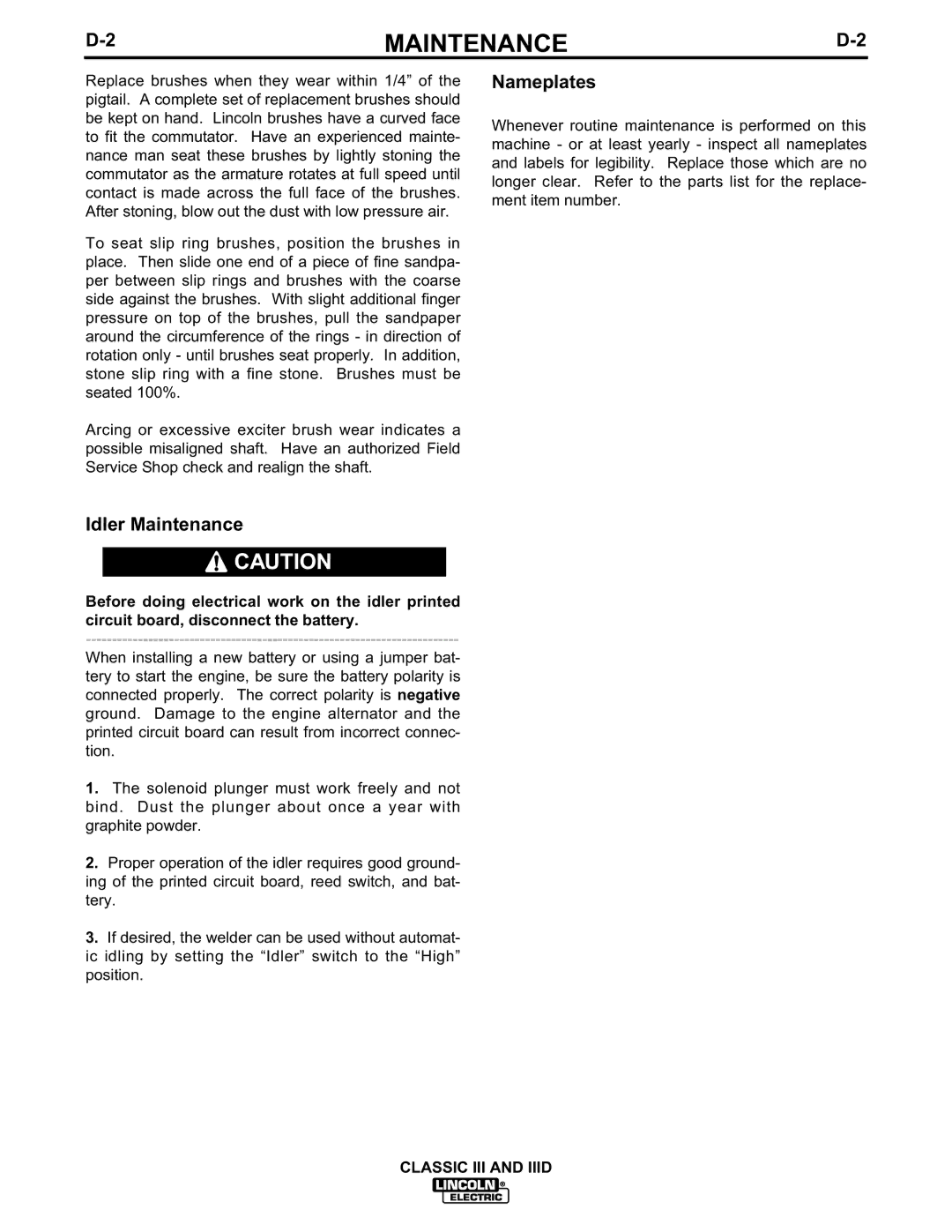
MAINTENANCE | ||
|
|
|
Replace brushes when they wear within 1/4” of the pigtail. A complete set of replacement brushes should be kept on hand. Lincoln brushes have a curved face to fit the commutator. Have an experienced mainte- nance man seat these brushes by lightly stoning the commutator as the armature rotates at full speed until contact is made across the full face of the brushes. After stoning, blow out the dust with low pressure air.
To seat slip ring brushes, position the brushes in place. Then slide one end of a piece of fine sandpa- per between slip rings and brushes with the coarse side against the brushes. With slight additional finger pressure on top of the brushes, pull the sandpaper around the circumference of the rings - in direction of rotation only - until brushes seat properly. In addition, stone slip ring with a fine stone. Brushes must be seated 100%.
Arcing or excessive exciter brush wear indicates a possible misaligned shaft. Have an authorized Field Service Shop check and realign the shaft.
Idler Maintenance
![]() CAUTION
CAUTION
Before doing electrical work on the idler printed circuit board, disconnect the battery.
When installing a new battery or using a jumper bat- tery to start the engine, be sure the battery polarity is connected properly. The correct polarity is negative ground. Damage to the engine alternator and the printed circuit board can result from incorrect connec- tion.
1.The solenoid plunger must work freely and not bind. Dust the plunger about once a year with graphite powder.
2.Proper operation of the idler requires good ground- ing of the printed circuit board, reed switch, and bat- tery.
3.If desired, the welder can be used without automat- ic idling by setting the “Idler” switch to the “High” position.
Nameplates
Whenever routine maintenance is performed on this machine - or at least yearly - inspect all nameplates and labels for legibility. Replace those which are no longer clear. Refer to the parts list for the replace- ment item number.
CLASSIC III AND IIID
